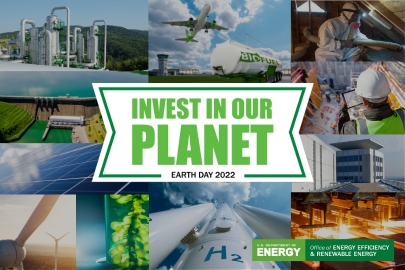On National Battery Day, Kelly Speakes-Backman provides an overview of EERE's past and present contributions to the advancement of this remarkable technology.
Office of Energy Efficiency & Renewable Energy
February 18, 2022Kelly Speakes-Backman
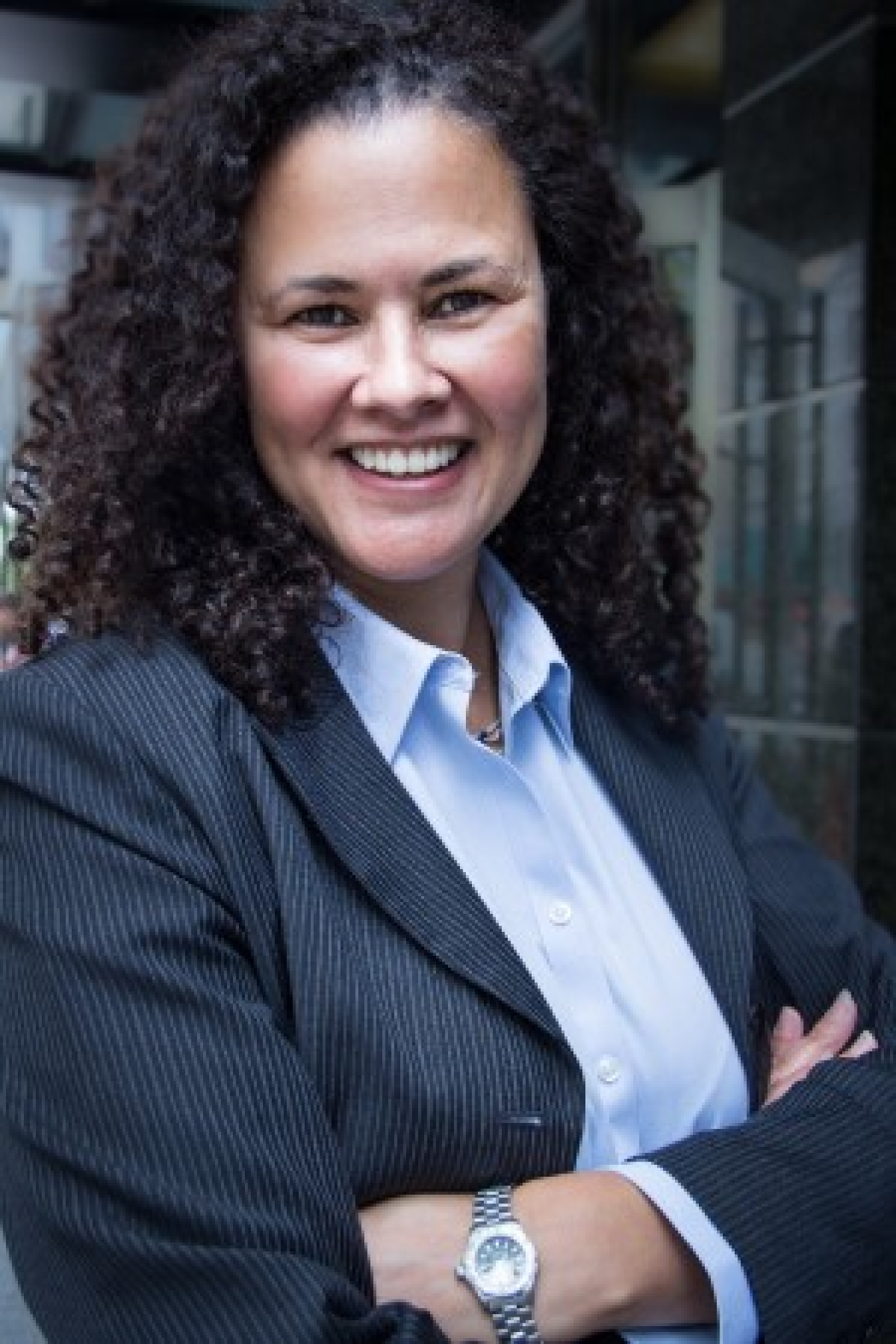
Kelly Speakes-Backman was the Principal Deputy Assistant Secretary for the Office of Energy Efficiency and Renewable Energy (EERE) at the U.S. Department of Energy from 2021-2022. In her role, Speakes-Backman led and directed the Office of Energy Efficiency and Renewable Energy, focused on creating and sustaining American leadership in the transition to a global clean energy economy. She oversaw the planning and execution of the organization’s $3.2B portfolio of research, development, demonstration, and deployment activities in energy efficiency, renewable energy, and sustainable transportation.
Speakes-Backman most recently served as the first CEO of the Energy Storage Association, the national trade organization for the energy storage industry. She has spent more than 20 years working in energy and environmental issues in the public, NGO and private sectors. In 2019, Speakes-Backman was honored by The Cleanie Awards as Woman of the Year.
Speaking Engagements
Articles by Kelly Speakes-Backman
-
 Read the letter from Kelly Speakes-Backman, Principal Deputy Assistant Secretary for the Office of Energy Efficiency and Renewable Energy, featured in the Water Power Technologies Office’s 2020-2021 Accomplishments Report.
Read the letter from Kelly Speakes-Backman, Principal Deputy Assistant Secretary for the Office of Energy Efficiency and Renewable Energy, featured in the Water Power Technologies Office’s 2020-2021 Accomplishments Report. -
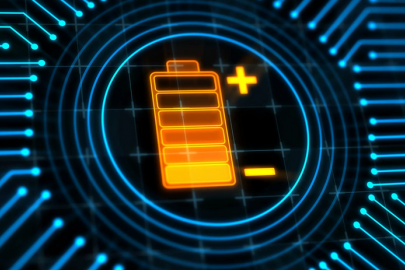 On National Battery Day, Kelly Speakes-Backman provides an overview of EERE's past and present contributions to the advancement of this remarkable technology.
On National Battery Day, Kelly Speakes-Backman provides an overview of EERE's past and present contributions to the advancement of this remarkable technology. -
 The Inclusive Energy Innovation Prize offers up to $2.5 million for projects that bring clean-technology entrepreneurship, research, incubation, and commercialization to communities suffering disproportionate harm from the effects of climate change.
The Inclusive Energy Innovation Prize offers up to $2.5 million for projects that bring clean-technology entrepreneurship, research, incubation, and commercialization to communities suffering disproportionate harm from the effects of climate change. -
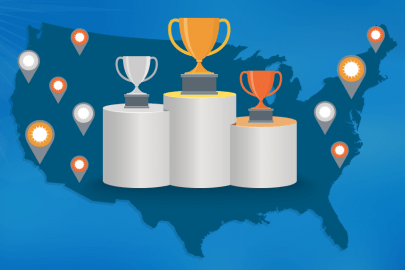 Learn how local jurisdictions across the United States are exploring solar energy.
Learn how local jurisdictions across the United States are exploring solar energy. -
 From a literal groundbreaking geothermal project to new justice- and equity-focused energy initiatives and more, Kelly Speakes-Backman celebrates EERE’s 2021 accomplishments.
From a literal groundbreaking geothermal project to new justice- and equity-focused energy initiatives and more, Kelly Speakes-Backman celebrates EERE’s 2021 accomplishments. -
 Last week, Energy Secretary Jennifer M. Granholm and Transportation Secretary Pete Buttigieg hit the road in an electric vehicle (EV) and drove to Takoma Park, Maryland. With cameras rolling, the two Cabinet members provided a glimpse into their trip.
Last week, Energy Secretary Jennifer M. Granholm and Transportation Secretary Pete Buttigieg hit the road in an electric vehicle (EV) and drove to Takoma Park, Maryland. With cameras rolling, the two Cabinet members provided a glimpse into their trip. -
 Check out these expert tips from EERE’s Principal Deputy Assistant Secretary on how to spark dinner conversation with clean energy.
Check out these expert tips from EERE’s Principal Deputy Assistant Secretary on how to spark dinner conversation with clean energy. -
 Preparing for the world’s most important climate change conference, EERE’s Principal Deputy Assistant Secretary discusses how the United States will contribute solutions.
Preparing for the world’s most important climate change conference, EERE’s Principal Deputy Assistant Secretary discusses how the United States will contribute solutions. -
 This historic effort to alleviate the disproportionate energy burden of low-income households will continue saving Americans hundreds of dollars on their energy bills with a new $3.5 billion infusion.
This historic effort to alleviate the disproportionate energy burden of low-income households will continue saving Americans hundreds of dollars on their energy bills with a new $3.5 billion infusion. -
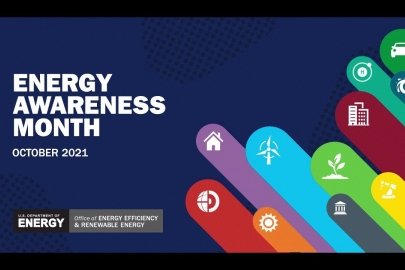 It’s a great time to spotlight how EERE’s 11 technology offices are working to ensure a more reliable power grid, safer and healthier homes and buildings, and affordable energy for all.
It’s a great time to spotlight how EERE’s 11 technology offices are working to ensure a more reliable power grid, safer and healthier homes and buildings, and affordable energy for all. -
More than 12 million U.S. workers have manufacturing jobs today—and millions more will in the next decade. Here’s how EERE is preparing future manufacturing workers with the technologies and skills they need to achieve a carbon-free economy.
-
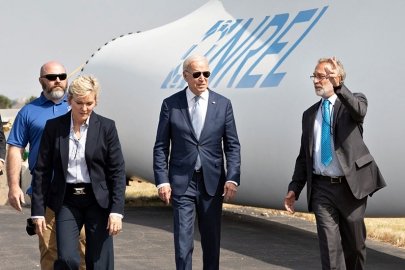 Get the inside scoop on President Biden and Secretary Granholm’s tour of the National Renewable Energy Laboratory with some of the country’s top energy researchers.
Get the inside scoop on President Biden and Secretary Granholm’s tour of the National Renewable Energy Laboratory with some of the country’s top energy researchers. -
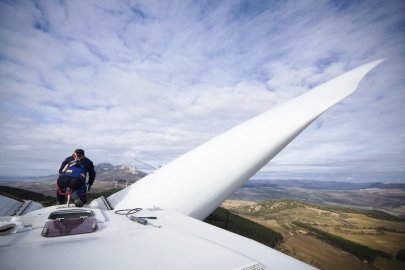 Here’s the breakdown of EERE’s request for $4.73 billion to invest in energy efficiency, renewable power, and sustainable transportation technology advancements that will lead to billions in private sector investment and create millions of jobs.
Here’s the breakdown of EERE’s request for $4.73 billion to invest in energy efficiency, renewable power, and sustainable transportation technology advancements that will lead to billions in private sector investment and create millions of jobs. -
 Earth Day may be a single day in April, but EERE celebrates it every day. EERE’s Principal Deputy Assistant Secretary explains how.
Earth Day may be a single day in April, but EERE celebrates it every day. EERE’s Principal Deputy Assistant Secretary explains how. -
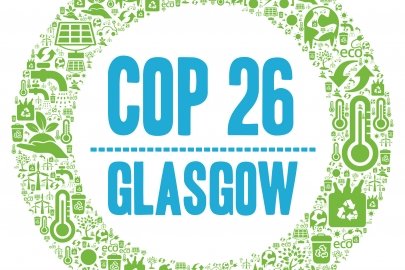 At the global climate change conference in Scotland, President Biden and Secretary Granholm launched several new initiatives critical to the U.S. decarbonization strategy. Learn about them here.
At the global climate change conference in Scotland, President Biden and Secretary Granholm launched several new initiatives critical to the U.S. decarbonization strategy. Learn about them here. -
Read about the recently launched GeoFlight: Salton Trough initiative, a collaborative effort between the Department of Energy’s Geothermal Technologies Office and the Department of Interior’s U.S. Geological Survey.
-
The leaves are changing colors, the air is getting cooler, and it’s once again October—also known as Energy Awareness Month, a national effort celebrating the central role of energy to our national prosperity, security, and environmental well-being.

National Battery Day is always a cause for celebration here at the Office of Energy Efficiency and Renewable Energy (EERE). While we don’t know when human beings officially started using this remarkable tool, we do know that it has been an engine of progress for centuries—and it is certain to play a vital role in the 21st-century transition to a clean-energy economy.
For decades, the U.S. Department of Energy has helped refine and expand the use of advanced battery technologies, and innovations in this field have touched the lives of every person in America. From the rechargeable lithium-ion batteries that power your laptop and mobile phone, to the electric vehicle batteries that have made electric cars more affordable than ever, advanced batteries are integral to our modern way of life.
If you’re looking for a reason to champion the use of battery technologies today, here are some quick facts about EERE’s work on advanced batteries.
Powering the electric-vehicle revolution
EERE’s Vehicle Technologies Office (VTO) focuses on reducing the cost, volume, and weight of batteries, while simultaneously improving their performance and durability. There are several dimensions to this work: performing exploratory research on the materials and electrochemical interactions associated with advanced batteries, developing and testing new battery materials, experimenting with new battery cells and modules, and more.
VTO-supported research led to the development of the nickel-metal hydride batteries used in nearly all first-generation hybrid electric vehicles (HEVs). VTO research also helped develop the lithium-ion battery technology used in the Chevrolet Volt, the first commercially available plug-in electric vehicle (PEV).
Advances in battery technology have huge implications for America’s transportation sector
Improved batteries for both HEVs and PEVs will be critical to the long-term economic, social, and environmental sustainability of our transportation system. Depending on the mix of technologies and the scale of adoption, transitioning to a light-duty fleet (that is, passenger vehicles you and I drive) of HEVs and PEVs could reduce domestic greenhouse gas emissions by 30%–45% while reducing our dependence on foreign sources of oil by 30%–60%.
While many electric vehicles are already on the market, improved batteries could make them more convenient to operate and more affordable to a wider range of consumers. In addition to light-duty vehicles, some manufacturers are working to electrify medium- and heavy-duty vehicles to improve fuel economy and reduce idling.
The more electric-vehicle batteries we make, the more we need to recycle
Because electric-drive vehicles are still relatively new to the American auto market, the corresponding battery-recycling infrastructure is limited. As more and more electric vehicles approach the end of their lives, the market for recycled batteries will expand. Widespread battery recycling will keep hazardous materials from entering the waste stream, both at the end of a battery's life and during its production.
EERE is working to develop battery-recycling processes that curb waste and minimize the environmental impact of lithium-ion and other kinds of batteries in vehicles. In February 2019, EERE launched its first advanced battery-recycling research and development center. The ReCell Center is helping the United States compete in a global recycling industry while reducing our reliance on foreign sources of battery materials. EERE is also incentivizing innovation in battery recycling through the Lithium-Ion Battery Recycling Prize, a $5 million phased competition that awards cash prizes to contestants who demonstrate new methods for profitably collecting, sorting, storing, and transporting spent lithium-ion batteries.
Economy-wide decarbonization requires a strong domestic supply chain
With the global lithium-ion battery market expected to grow rapidly over the next decade, EERE is working to ensure the United States can meet this growing market demand. Responsible and sustainable domestic sourcing of the critical materials used to make lithium-ion batteries, including lithium, cobalt, nickel, and graphite, will minimize supply-chain disruptions, expand the domestic clean-energy workforce, and accelerate the decarbonization of America’s transportation sector.
Just last week, EERE announced its intent to provide $2.91 billion to support domestic production of advanced batteries by funding battery-materials refining and production plants, battery-cell and pack-manufacturing facilities, and recycling facilities—all of which will add new jobs to the growing clean-energy economy.
This announcement followed a 100-day review published by Department of Energy in response to President Biden’s executive order on domestic supply chains. The review recommended establishing domestic production and processing capabilities for critical materials to support a fully domestic, end-to-end battery supply chain. President Biden’s Bipartisan Infrastructure Law allocates nearly $7 billion to strengthen the U.S. battery supply chain, which includes producing and recycling critical minerals without new extraction or mining, and sourcing materials for domestic manufacturing.


